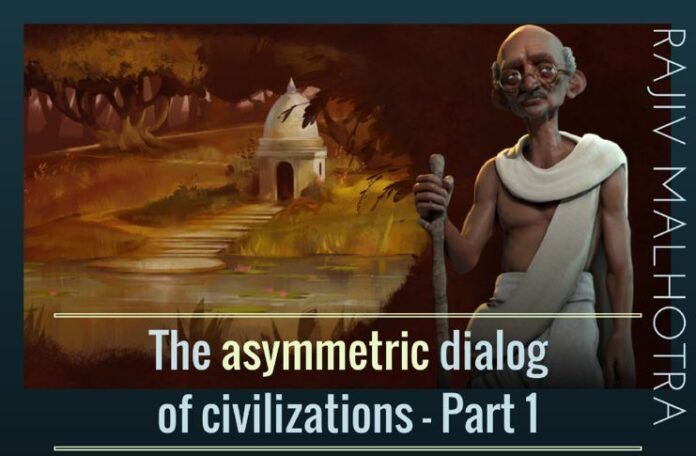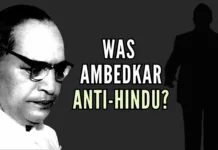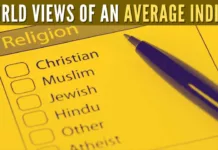
The History
[dropcap color=”#008040″ boxed=”yes” boxed_radius=”8px” class=”” id=””]I[/dropcap]n contrast with the clash of civilizations now being popularized, I would much rather propose a dialog among them. But what are the historical reasons for lack of this dialog, and what prevents this from becoming the top priority for humanity today? I researched the writings of eminent scholars in a variety of specialties, such as history, multiculturalism, colonialism, Eurocentrism, to name a few. Serious work by many mainstream scholars abundantly establishes the mutual dependency between the asymmetry of power and institutionalized prejudices in research and education. These asymmetries of power and intellectual representation prevent genuine dialog among the peoples of the world.
Eurocentrism is the colonizer’s model of the world in a very literal sense: it is not merely a set of beliefs, a bundle of beliefs.
Consider the following quotes from prominent scholars of inter-civilization studies:
Eurocentrism is the colonizer’s model of the world in a very literal sense: it is not merely a set of beliefs, a bundle of beliefs. It has evolved, through time, into a very finely sculpted model, a structured whole; in fact a single theory; in fact a super theory, a general framework for many smaller theories, historical, geographical, psychological, sociological, and philosophical. — J.M. Blaut [1]
The conquistador exerted his power by denying the Other his dignity, by reducing the Indian to the Same, and by compelling the Indian to become his docile, oppressed instrument. The conquest practically affirms the conquering ego and negates the Other as Other… [A]fter the innocent Other’s victimization, the myth of modernity declares the Other the culpable cause of that victimization and absolves the modern subject of any guilt for the victimizing act… Finally, the suffering of the conquered and colonized people appears as a necessary sacrifice and the inevitable price of modernization… Modernity justifies the Other’s suffering because it [allegedly] saves many innocent victims from the barbarity of these cultures… The myth of modernity perpetrates a gigantic inversion: the innocent victim becomes culpable and the culpable victimizer becomes innocent. — Enrique Dussel [2]
Notice, in particular, how academic scholarship in the humanities, far from being considered objective, is viewed as a central culprit, even today:
[T]he history which [the colonial scholar] writes is not the history of the country which he plunders but the history of his own nation in regard to all that she skims off, all that she violates and starves. —Frantz Fanon [3]
…[T]he game is still going on, when ‘otherness’ of the other is used to legitimize the oppression and subjugation… The tensions and anxieties that we bear as members of distinct groups are now to be seen in their interconnectedness… It is indeed difficult to fight a battle whose goal is not to defeat anyone but rather that nobody is defeated. The battle is to be waged against a system that produces the oppressors and the oppressed, the exploiters and the exploited, the winners and the losers, cutting across race, gender, nationality or any other form of collectivity… The “institutionalization of universities into departmental structures” plays an important role in the cultural life of the West. This is precisely why when these departments do not represent the intellectual traditions of the East, they are not simply silent but they are helping to perpetuate the image of a mythical, mysterious, non-rational East. — Anindita Niyogi Balslev [4]
Focusing specifically on the misrepresentation of India, I found a wealth of research material. For instance, Wilhelm Halbfass, the Indologist at U-Penn (who unfortunately passed away a year ago) wrote:
“In the modern planetary situation Eastern and Western ‘cultures’ can no longer meet one another as equal partners. They meet in a westernized world, under conditions shaped by western ways of thinking.” [5]
Colonizers heavily sponsored scholars to research and represent their colonized subjects. For instance, the British Census of India was one such process to represent India in British categories, while superficially pretending to use Indian categories. This became the basis for re-engineering India’s society to fit into rigid ‘castes’, a representation that has continued after independence and has become the center of India’s politics today. The ‘essentializing’ of caste in the representation means that it is deemed an inherent and unchangeable quality that Hindus are frozen into forever. (Traditionally, jatis and varnas were independent of one another, and had mobility.) The more flexible language of describing certain communities as socially underprivileged, and implementing affirmative action programs strictly based on economic means, would have de-essentialized the jati, and over a period of time reduced its significance. ‘Dalit’ as a category by birth is self-perpetuating, unproductive and divisive, and the consequence of adopting a colonial representation system.
A representation system is a meta-ideology, providing the implicit frame of reference of the discourse, and acts as the subliminal playing field on which specific scholarship unfolds. The power of representation was explained very emphatically by Friedreich Nietzsche:
“The reputation, name, and appearance, the usual measure and weight of a thing, what it counts for — originally almost always wrong and arbitrary — grows from generation unto generation, merely because people believe in it, until it gradually grows to be a part of the thing and turns into its very body. What at first was appearance becomes in the end, almost invariably, the essence and is effective as such.”
Huston Smith, one of the leaders of the western academy for religious studies, recently described Freudian psychoanalysis of Hindu saints, now a popular academic movement, as “colonialism updated.” [6]
The Challenge of Dialog
[dropcap color=”#008040″ boxed=”yes” boxed_radius=”8px” class=”” id=””]T[/dropcap]o have a genuine dialog of civilizations, the ‘other’ side must be present as itself and not via proxy, must be able to use its own framework to represent itself, and must be free to anthropologize and criticize the dominant culture without fear of undue censorship or academic reprisal. Balslev explains the importance of the process:
I am not representing the Hindutva view, as Hindutva should not be conflated with Hinduism…
“…The challenge before us is not to validate a heritage or a culture at the cost of another but to perceive cross-cultural conversation as a mutually empowering dialogue that raises the consciousness of all the participants involved… [I]n a genuine dialogue, the dialogical partners are not merely “subjects” speaking to each other, but participants in the dialogue. The practice of dialogue is an art that must be cultivated… We must revise our prejudgments, modify our hypotheses, and then listen again. In this to-and-fro movement in which we (mutually) seek to understand each other, the dialogic partners cultivate the art of the hermeneutical circle.” [7]
Before proceeding to describe the asymmetries that prevent genuine dialog specifically between Indic traditions and the scholars, I wish to clarify at the outset that I represent neither pole of what has become a bipolar fight for the representation of Indian culture: I am not representing the Hindutva view, as Hindutva should not be conflated with Hinduism, because: (i) Hindutva is a political mobilization, (ii) it is a recent 20th century construct in response to contemporary situations, and (iii) it assumes a specific (reductionist) package of stances, whereas most Hindus pick and choose positions from an a la carte menu of choices [8]. At the same time, I do not deny the Hindutva their right to a position within the vast spectrum of Hinduism, as one of many ways to be a Hindu. At the other pole, is the theory of Hinduism defined as The Evil Brahmin Conspiracy. Most Hindus I know belong to neither extreme, although there has been a tendency for one pole to insist, ‘if you are not pink, you must be saffron’, and vice versa. The vast middle is un-essentialized, where creative dialog can take place, and it is in this middle space that I position myself and the observations below.
The five asymmetries, of which the first three concern academic translations of Indic culture, are:
Asymmetry I: Anthropologist Dominating the Native Informant
[dropcap color=”#008040″ boxed=”yes” boxed_radius=”8px” class=”” id=””]K[/dropcap]aren Brown, the anthropologist of religion, recently proposed the following as the credo for western anthropologists: “The people and cultures that we Westerners study deserve our respect, reciprocity, and responsibility.” [9] However, scholars often unintentionally assume that distance (intellectual, cultural, geographic) produces objectivity, whereas reciprocity and not distance is the key to dialog. The dark side of contemporary anthropology is exposed bluntly by Edward Said:
In so many of the various writings on anthropology, epistemology, textualization, and otherness that I have read, which in scope and material run the gamut from anthropology to history and literary theory, there is an almost total absence of any reference to… imperial intervention as a factor affecting the theoretical discussion.
“…[Western scholarship]… carries within it as a major constitutive element, the unequal relationship of force between, the outside Western ethnographer-observer and a primitive, or at least different but certainly weaker and less developed, non-Western society. …The real problem remains to haunt us: the relationship between anthropology as an ongoing enterprise and on the other hand, empire as an ongoing concern…. [A]nthropology is being seen as part of a larger, more complex historical whole, much more closely aligned with the consolidation of Western power than had previously been admitted. … Thus: think the narratives through together within the context provided by the history of imperialism….” [10]
“The fetishization and relentless celebration or “difference” and “otherness” can therefore be seen as an ominous trend. … “the spectacularization of anthropology”… cannot easily be distinguished from the process of empire. …. [I]n so many of the various writings on anthropology, epistemology, textualization, and otherness that I have read, which in scope and material run the gamut from anthropology to history and literary theory, there is an almost total absence of any reference to… imperial intervention as a factor affecting the theoretical discussion. … There are armies, and armies of scholars at work politically, militarily, ideologically…” [11]
And is echoed by Robert Young:
“…The appropriation of the other as a form of knowledge within a totalizing system can thus be set alongside the history (if not the project) of European imperialism, and the constitution of the other as ‘other’ alongside racism and sexism.” [12]
[dropcap color=”#008040″ boxed=”yes” boxed_radius=”8px” class=”” id=””]T[/dropcap]zvetan Todorov analyzes anthropology historically using the term “new trinity” to describe “the old-style soldier-conquistador: it consists of the scholar, the priest, and the merchant”: The first collects information about the country, the second promotes its “spiritual annexation” and the third “makes certain of the profits.” [13]
Villagers should be able to give their own opinions of the scholar as the ‘firangi’ from America, including her exotic or peculiar ways: the poor have agency.
Western anthropologists of India use native informants, who are typically poor and less educated villagers paid to produce the data, and who often place the scholar on a pedestal because of their own limited material resources and the glorification of India’s xenophile elite. Scholars mine such data, filter it through western lens, legitimize it with western peers who are part of their own academic system, and too often assert this Orientalist construction as ‘the truth’. Few today do this overtly or intentionally. However:
There is little counterbalancing information flow to help the villagers learn what was said and published about them by the scholar — except what the same scholar feeds them.
There are hardly any independent surveys or focus groups in the field to ascertain whether villagers disagree with the ethnographies that become standard descriptions about them, or to point out what was left out, distorted or improperly contextualized.
Villagers should be able to give their own opinions of the scholar as the ‘firangi’ from America, including her exotic or peculiar ways: the poor have agency. Researchers do include how villagers react to, admit, get used to, or query the scholar, but this itself is usually the dominant culture’s own filtered presentation.
All measurements disrupt. I am unaware of any controlled studies comparing a neighboring village that was not disrupted by a prolonged scholarly intervention, so as to evaluate the social re-engineering side effect of scholarship.
While there are also many sensitive researchers, there needs to be greater recognition of the need for reciprocity. This calls for dis-intermediation of the role of anthropologist as knowledge broker between the villagers and the American students. I do not claim to know yet how to achieve true ‘independence’, but a plurality of cross-cultural worldviews would be better than one dominant view. For instance, besides reverse surveys, native informants could get invited to panels via video phones that are now very cost effective, with translators. Perhaps, the scholar-as-broker feels threatened that the native informants would be found to have agency after all, and to challenge decades of research. This is especially severe when the White Woman’s Burden drives the scholar to impose her gift of agency on poor people presumed to have none.
Are the native informants becoming victims of the scholars’ violation of trust? I propose that an interactive dialog between equal civilizations become anthropology’s new hermeneutics, and that scholars expand their work to enhance validation and symmetry.
To be continued…
References:
[1] The Colonizer’s Model of the World: Geographical Diffusionism and Eurocentric History, by J.M. Blaut. The Guilford Press, New York, NY. P.11.
[2] The Invention of the Americas: Eclipse of “the Other” and the Myth of Modernity, by Enrique Dussel. Translated by Michael D. Barber. The Continuum Publishing Company, New York, NY. Pp. 44; 64-67.
[3] Frantz Fanon, The Wretched of the Earth. P.120.
[4] Cross-Cultural Conversation, Edited by Anindita Niyogi Balslev. The American Academy of Religion. Pp.23-24.
[5] India and Europe, by W. Halbfass. First edition, Delhi, MLBD, P. 44.
[6] Harvard Divinity Bulletin. Spring 2001. P.2.
[7] Cross-Cultural Conversation, Edited by Anindita Niyogi Balslev. The American Academy of Religion. Pp. 24; 37-38.
[8] For instance: (i) I have criticized the introduction of astrology as a ‘science’ into the academic curriculum, and the notion that there is a ‘Vedic Science’. (I have argued that Newton’s Laws of Gravitation are not ‘English Laws’ or ‘Christian Science’). (ii) I have expressed concern that the Aryan theory controversy is overdone in its significance, at the expense of more serious issues. (iii) I do not subscribe to the literalist interpretation of the Puranas – neither to claim hi-tech accomplishments (that the Hindutva claim), and nor to literally interpret the verses suggesting social abuse (that westerners like to rub in). (iv) I have written about the general intellectual shallowness in many instances of Hindutva scholarship, at least in its current stage. (v) I am against the demolishment of mosques, even when there is compelling evidence (including from Muslim sources) of some of these having being built by destroying Hindu temples.
[9] Karen Brown, the anthropologist of religion, speaking at the World Conference on “Gender and Orality” — May 2001, Claremont CA.
[10] Representing the Colonized: Anthropology’s Interlocutors, by Edward W. Said, Critical Inquiry, Volume 15 Winter 1989. Pp. 217-224.
[11] Representing the Colonized: Anthropology’s Interlocutors, by Edward W. Said, Critical Inquiry, Volume 15 Winter 1989. Pp. 213-214.
[12] White Mythologies: Writing History and the West, by Robert Young. Routledge, London. 1990. P.4.
[13] The Conquest of America, by Tzvetan Todorov P. 175.
[14] Examples of terms deserving better treatment include: murti, deva, varna, lingam, tantra, agni, sati, atman, etc.
[15] See for example, J. J. Clark’s book, Oriental Enlightenment.
[16] Frantz Fanon, The Wretched of the Earth.
[17] Impressing the Whites: The New International Slavery, by Richard Crasta. Invisible Man Books. Pp. 10-11.
[18] ibid. Pp. 100-103.
[19] ibid. P. 107.
[20] ibid. P.15.
[21] As one example only, those adopting a literalist interpretation of Indian texts are deemed fanatics, nationalists, and fundamentalists. But in Bible Studies, literalist interpretations are a well-respected hermeneutical approach. George Gallup’s book of surveys of Americans’ religious beliefs says that over 50% of all Americans believe in the literal interpretation of the Bible. Yet, we don’t denounce the majority of Americans as fundamentalist-fanatics. In the case of Islam, the Koran is viewed as the literal history and not metaphorically by the mainstream. Personally, I prefer the metaphorical interpretation of all religious texts, but feel that literalist interpretations are a person’s right without facing abuses.
[22] Crasta. P. 79.
[23] See Swami Tyagananda’s criticism of the book, Kali’s Child posted at: http://www.infinityfoundation.com/mandala/s_rv/s_rv_tyaga_kali1_frameset.htm
[24] Breaking With The Enlightenment, by Rajani Kannepalli Kanth. Humanities Press, New Jersey, 1997. P. xv
- Part 2: Discussion between Dr. Swamy and Rajiv Malhotra - September 10, 2017
- Dr Subramanian Swamy In Conversation with Rajiv Malhotra - July 24, 2017
- P2 – Discussing the Digestion of Yoga with a White Hindu - July 3, 2017










